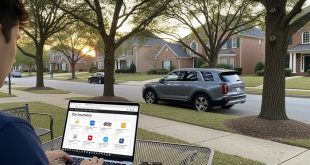When the topic of insurance is brought up, people typically think of car insurance, especially if they need to ensure their business fleet. Maybe it’s because not everyone owns a home, and renters insurance isn’t the most commonly practiced thing (even though it should be). Regardless, car insurance isn’t able to be sidestepped if you operate a vehicle, and naturally, many questions arise when going through the insurance shopping process.
Whether it’s state minimum laws, being protected in the worst-case scenario, or even just knowing that a bill is due every month, car insurance is an often-referenced subject. However, not a lot of people have taken the time to truly understand the ins and outs of car insurance. As a result of this, some people may not be covering all of their risks, may be over paying, or could be selling themselves short when it comes to quotes because they just don’t know enough about.
So take a look at the following to get a much better understanding of car insurance so you can start figuring out what changes you should be making to your auto policy.
Physical Damage
One of the biggest pieces of auto insurance is typically the physical damage coverage. This is the amount that you pay each and every year to ensure that if your car has anything happen to it, your insurance company will step in and pay to have your car repaired or replaced. There are some additional perks or bells and whistles that can be added onto this coverage such as windshield repair, towing and roadside assistance, and jumping your battery if it’s dead. That being said, the physical damage section is exclusively to protect your vehicle in the event that something happens to it.
Physical damage is divided up into two separate sub categories. The first part of physical damage coverage is your comprehensive damage. This is what protects you in case something happens to your car while it’s parked. This could be if it is vandalized, a tree falls on it, a roof in a garage collapses on top of it, hail breaks the windshield, or other potential hazards. Of course, the specific coverage will depend on the policy language itself, but when something happens other than a collision then you have comprehensive coverage. The other portion of physical damage is the collision coverage. In short, if you are driving your vehicle and a collision occurs (regardless of fault), then the damage to your auto is covered. Note that this can depend on some state specific laws as well.
Auto Liability
Speaking of collisions, if you happen to be involved in any sort of collision then you could be liable for the damage that you have done. If you hit another pedestrian (whether they are in a car or not), or if you cause any sort of property damage then that is where your liability car insurance comes into play. What is liability car insurance? According to CoverHound, it’s where a significant portion of your auto insurance cost can come into effect. The reason for this has to do with the overall limits of the policy. If your auto limits are one million dollars (or even more than that) for example, then the auto insurance company could be on the hook for up to that limit when you have an accident. That is the reason why auto insurance is so expensive. You might pay your premium for years and never have a single claim, but once you have a single claim and it hits tens or hundreds of thousands of dollars, the insurance company has effectively lost money on your account.
Another major component of liability is not just the fact that you could have a single claim that winds up costing a lot of money all at once, but what happens if you are to cause a claim that involves medical bills that go on for years? The insurance company could be in a position where they are paying thousands of dollars per year for decades, and they essentially bought that risk by only charging you a few hundred dollars for insurance. There is significant risk that is taken on by the insurance company when it comes to auto liability.
Apples to Apples on Rates
Another major point to remember is the actual rates. While a given company may have the ability to offer you a cheaper quote, you need to think about the coverage being provided. If you only save a few dollars to switch to a separate company but actually wind up losing a significant amount of your coverage, are you really saving in the first place? Keeping rates even is one way that you can truly ensure your insurance remains competitive.
Whatever options you decide to go with will depend on multiple things including your state, your financial status, and many other personal factors. However, as long as you know what you are paying for as well as why you are paying it, you have a much better shot of being completely covered all while minimizing the amount you pay along the way. Understanding the car insurance process can only help your situation.
 Entrepreneur Resources Your source for small business information
Entrepreneur Resources Your source for small business information




